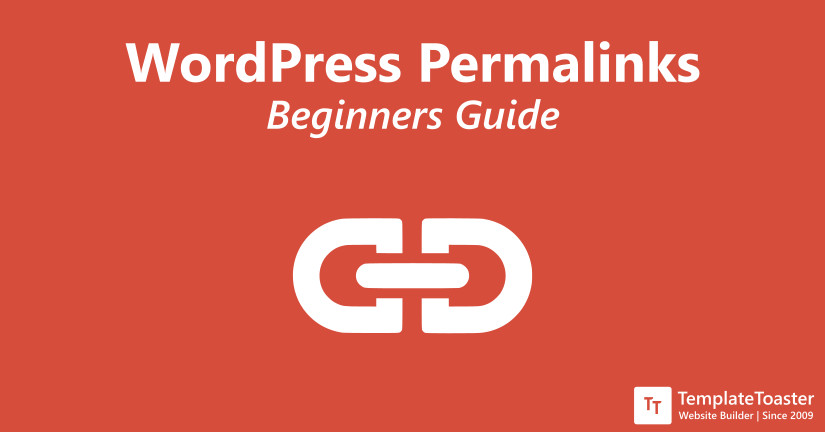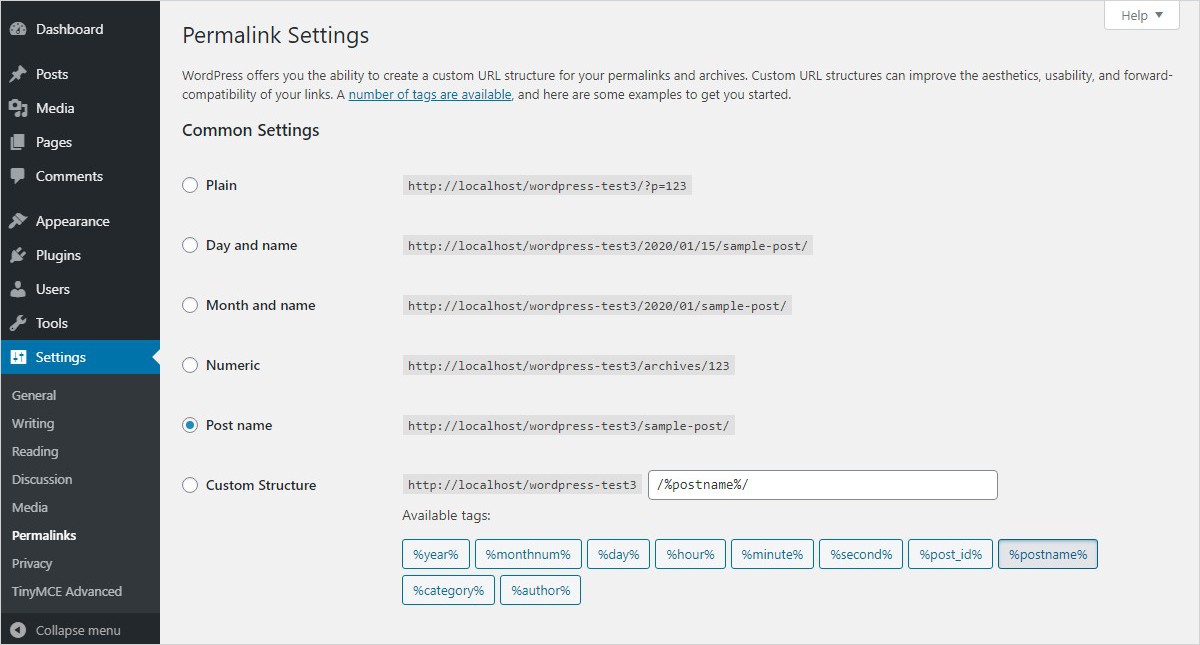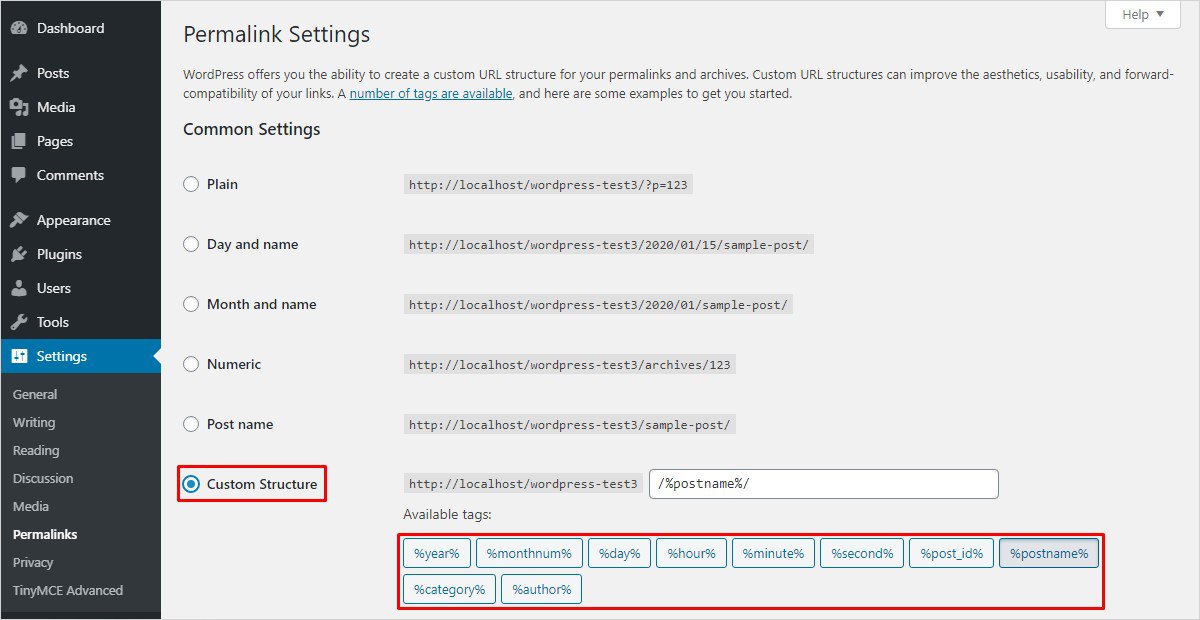WordPress Permalinks: Complete Beginners Guide

Have you ever heard about the term “permalink“? If you are a WordPress user I am sure you definitely have heard about it. On the other hand, even if you are new to WordPress, still I am sure you have actually seen a permalink but are not familiar with the term. You probably have seen a URL right? The same URL, when used in WordPress, is known as the permalink. So, without any further ado, let’s learn about permalinks in detail.
What is a Permalink?
Every webpage has a unique Uniform Resource Locator (URL). And it is usually used to open up a website page. The URL may appear in varying formats. It usually consists of a domain name and an extension. Additionally, followed by a slash symbol. In a nutshell, it can be said that a URL is the same as a permalink. The word permalink refers to a permanent link. Which further, points to a specific page. Permalinks may or may not be attractive. Thus, implying that a website owner has the provision to change the appearance of a URL.
Some Permalink structures are more SEO-friendly. Therefore, helping search engines to understand the page better. In WordPress, the permalink may contain the slug, date, month, page title, author name, etc. You can change it according to your needs. But changing it might cause a decrease in traffic to your website. As your visitors may come across 404 errors.
For Instance:
A WordPress permalink would look like this by default:
[box title=””]http://somedomain.com/?p=N (where N is a number)[/box]
Obviously, this ain’t attractive enough to get noticed. And visitors usually prefer to see about the page through the URL itself.
You can change your permalink into:
[box title=””]http://somedomain.com/page-title[/box]
You might have noticed that the default permalink shows a number assigned to the particular webpage. And this number depicts the address of the page in the database. By changing the permalink structure you can change it.
So, How to Choose a Permalink Structure?
Once you are on your WordPress dashboard. Click on Settings. Further, click on Permalinks. From there, you will be able to see several options for WordPress permalink structures. And how you wish your permalink to look like.
Settings →Permalinks

Here are the types of permalink structures available in WordPress.
-
Plain Permalink
http://somedomain.com/?p=123 – Here 123 depicts the ID assigned to a particular page in the database. This link has a domain name followed by a page ID. Page ID of a post is an address assigned to every post for its unique identity. Using this page ID the posts are fetched from the database.
-
Date and Name Permalink
http://somedomain.com/2016/10/28/post-title/ – Whereas, this URL denotes the date and title of a post. It is better for websites that provide news on a daily basis. Because the user can easily understand the publishing date from the URL itself.
-
Month and Name Permalink
http://somedomain.com/2016/10/post-title/ – It is similar to the above. But it only contains month and year details. This is ideal for blogs that do not have many posts in a particular month.
-
Numeric Permalink
http://somedomain.com/archieves/123 – Here 123 represents a numeric representation of a particular page from the archives. The archives section represents the old collection of posts. From where the particular post has been fetched using page ID.
-
Post Name Permalink
http://somedomain.com/sample-post/ – It is highly recommended for bloggers. It only shows the post name. Another reason for its popularity in Search Engines.
-
Custom Structure Permalink
http://somedomain.com/_____________ – This is for websites that think out of the box. You can create your own URL using the structure tags, thus, helping you make your custom URL.
Using Structure Tags

Structure tags are used to specifically point to a particular page or post. In setting up a URL structure, you may manually configure your desired URL structure. The general format for WordPress is domain name + structure tag. Here are some good structure tags that you can use (items in parentheses are examples):
- %year% – to denote year (2020)
- %monthnum% – to denote month (October)
- %day% – to denote day (Friday)
- %hour% – to denote hour of the day (12)
- %minute% -to denote minute of the hour (25)
- %second% – to denote second of the minute (35)
- %post_id% – to denote the unique ID number of the post (120)
- %postname% – to denote the title of the post (“The Elements of Success of an Entrepreneur” becomes “elements-of-success-of-an-entrepreneur”)
- %category% – denotes the category name
- %author% – denotes the name of the author
Here are some basic tips on how to choose the correct URL structure for your site.
- Make it as simple as possible. Prefer using your domain name and your post name.
Example: http://somedomain.com/post-title - There is no need to include verbs or prepositions in it such as “is”, “are”, “the”, “that”, “of” etc.
- If you change a URL, do not forget to use 301 redirects. This means that you have to redirect it to a new web page. Fortunately, this comes bundled with WordPress.
- Make use of keywords that can help optimize your URL.
Permalinks Can Improve the Website SEO Score
Search engines make use of an algorithm to detect the quality and frequency of keywords. This can help improve your page rankings. The title, description, date, and permalink are what visitors see when they seek something through search engines. By using the right structure, you can reach out to people who are looking for specific keywords. Using URLs properly can help decrease bounce rates.
[call_to_action color=”gray” button_icon=”download” button_icon_position=”left” button_text=”Download Now” button_url=”https://templatetoaster.com/download” button_color=”violet”]
Design SEO Friendly WordPress websites in minutes using TemplateToaster WordPress Theme Builder and website builder software.[/call_to_action]
So, How to Fix Common Permalink Issues
Here are some popular errors and issues related to permalink structures. And some quick solutions to address them.
Erroneous File Permission: Change the .htaccess file to 666. This allows you to edit using the WordPress template editor.
Permalinks on pages that do not work: New rules should be generated and updated in .htaccess. Simply go to Settings-> Permalinks and click Save once again.
404 errors: Go to Settings-> Permalinks and click Save once again.
In Conclusion
The increase in online visibility is greatly affected by the URL used for the website. Correct keyword usage incorporated in the permalink is an important factor in helping search engines rank your site better.
You can never go wrong in making your site improve its online presence when everything is carefully thought of, and one effective way of doing it is by structuring your links properly. All standard WordPress Themes and templates including the ones designed using TemplateToaster support the WordPress permalink feature.
Related Reading
How to Install WordPress Theme
Build a Stunning Website in Minutes with TemplateToaster Website Builder
Create Your Own Website Now
I’ve always heard that the best permalink structure is the one that will give you the smallest and easy URL, which is why I always choose just the post title in the URLs.